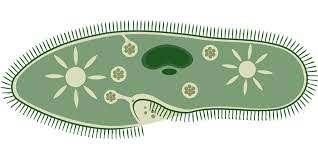qPCR vs. Plating in Microbial Analysis of Cannabis

 Microbial analysis helps ensure that cannabis users are not exposed to toxic contaminants. This is especially important for medicinal cannabis patients whose immunity may not be competent enough to fight infections. One risk in cannabis is aspergillosis, which is a respiratory infection that occurs when Aspergillus spores are inhaled. [1] This can be fatal if not treated in good time. [1] Salmonella outbreaks are another cause for concern when contaminated cannabis is consumed. [2]
Microbial analysis helps ensure that cannabis users are not exposed to toxic contaminants. This is especially important for medicinal cannabis patients whose immunity may not be competent enough to fight infections. One risk in cannabis is aspergillosis, which is a respiratory infection that occurs when Aspergillus spores are inhaled. [1] This can be fatal if not treated in good time. [1] Salmonella outbreaks are another cause for concern when contaminated cannabis is consumed. [2]
Quantitative polymerase chain reaction (qPCR) versus plating has been the subject of controversy in the world of cannabis testing and analysis. In Massachusetts, for example, laboratories were approved for microbial testing using either method. But several scientists argued that plating is obsolete and far less effective/accurate compared to qPCR, compromising public safety. Plating proponents point to the method’s traditional and common use in food industries.
PCR describes a method for amplifying DNA fragments in in vitro microbial analysis. qPCR is a method of identifying microbial agents that quantifies each particular genomic fragment. qPCR is also referred to as real-time PCR.
Plating is a passive assay method that requires a growth medium (such as agar) that is used to culture microorganisms. Colonies are grown in petri dishes and counted.
A 2016 investigation under open peer review (referees include Dr. Ethan Russo) compared qPCR and plating on 15 medicinal cannabis samples (indoor) from Massachusetts, Rhode Island, and Maine. [3] Plating was done with 3M PetrifilmTM Rapid Yeast and Mold Count Plates and Biomérieux TEMPO® YM cards. Medicinal Genomics (the main author) also used their own commercial qPCR equipment to test samples before and after culturing. The main conclusions were:
- Plating may foster bacteria and dramatically alter the microbiome of the sample; this is also referred to as the observer effect where measuring the sample changes the sample.
- Aspergillus grows poorly in plated cannabis samples and is therefore not accurately detected by this method. [3]
In a self-published report, the same authors point out that Aspergillus species can be difficult to differentiate using plating. A laboratory in Alaska announced dangerous mold (Aspergillus niger) after a plating test; they publicly denounced a rival qPCR laboratory for not detecting this threat. But the plating test was revealed to have been a false positive mistaking a harmless species (Aspergillus brasiliensis) with a deadly one (Aspergillus niger). The plating laboratory then shut down.
qPCR detection is an active assay method that looks for specific DNA sequences shared by a family of microbes. As Adam Scavone of North Coast Testing Laboratories recently explained in an interview with Terpenes & Testing, “[qPCR] can specifically and accurately determine whether a cannabis sample contains dangerous organisms, providing a significant advantage over culture-based methods. In technical terms, qPCR is also highly sensitive – if a target organism exists in the tested sample, it’s nearly certain to be identified by qPCR.”
Although requiring more complex and expensive equipment, qPCR appears to be the most accurate and precise way to detect microbes in cannabis.
Image Source
OpenClipart-Vectors from Pixabay
References
- Babu TM GM, Urban MA, et al. Aspergillosis presenting as multiple pulmonary nodules in an immunocompetent cannabis user. Journal of Toxicology and Pharmacology. 2017; 1:004. Journal Impact Factor: 3.292; Times Cited: n/a
- Taylor DN, et al. Salmonellosis associated with marijuana: a multistate outbreak traced by plasmid fingerprinting. The New England Journal of Medicine. 1982;306(21):1249-53. Journal Impact Factor: 70.67: Times Cited: 153
- McKernan K, et al. Metagenomic analysis of medicinal Cannabissamples; pathogenic bacteria, toxigenic fungi, and beneficial microbes grow in culture-based yeast and mold tests. F1000Res. 2016;5:2471. doi:10.12688/f1000research.9662.1. Journal Impact Factor: 1.357; Times Cited: 15


